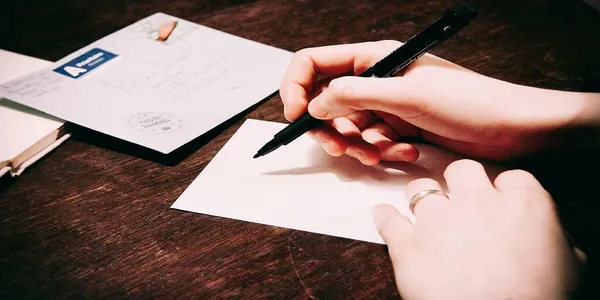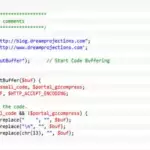Formal Letter Format: When it comes to communication in a professional setting, there are few things as important as knowing how to write a formal letter. Whether you’re applying for a job, sending a complaint, or simply trying to get in touch with someone in a business context, understanding the proper format and tone of a formal letter is crucial. In this article, we’ll take a deep dive into the key elements of formal letter format, from the heading to the signature.
Formal Letter Format, To start, it’s important to understand the purpose of a formal letter. Unlike informal communication such as emails or text messages, formal letters are used to convey important messages professionally. This could include anything from requesting information to submitting a formal complaint. Regardless of the specific reason for the letter, the format should always be formal and structured.
The first element of a Formal Letter Format is the heading. This includes your name and address, the date, and the recipient’s name and address. It’s important to include this information as it ensures that the letter reaches the intended recipient and also provides context for the reader.
Following the heading is the salutation, which is typically addressed to “Dear [Recipient’s Name].” It’s important to make sure that you use the appropriate title for the recipient, such as Mr., Mrs., or Dr.
After the salutation, the first paragraph should provide a clear and concise introduction to the purpose of the letter. This should include a brief explanation of why you’re writing and what you hope to accomplish with the Formal Letter Format.
The body of the letter should expand on the introduction and provide additional details and information. It’s important to be clear and specific and to avoid any unnecessary information or tangents. The tone should be formal and professional throughout, and it’s important to avoid using slang or informal language.
In the closing paragraph, it’s important to summarize the main points of the letter and clearly state what you hope to achieve. This could include a request for further action, a call to action, or simply a thank you for the recipient’s time and attention.
Finally, the signature should include your name and any relevant contact information. It’s important to sign the letter by hand, as this adds a personal touch and shows that you took the time to craft thoughtful and professional communication.
Overall, understanding the key elements of the formal letter format is essential for effective communication in a professional setting. By following these guidelines and using a formal and structured approach, you can ensure that your message is received and understood in the way that you intended.
Closing: Formal Letter Format
The closing of a formal letter should be polite and respectful. It should also summarize the purpose of the letter and suggest any follow-up actions if necessary. A typical closing might include phrases such as:
- “Sincerely” or “Yours faithfully” (if you do not know the recipient’s name)
- “Best regards” or “Yours sincerely” (if you know the recipient’s name)
- “Thank you for your attention to this matter”
- “Please do not hesitate to contact me if you require further information”
Signature
At the end of the Formal Letter Format, leave space for your signature and include your full name, title, and contact information (such as phone number and email address).
Additional Tips: Formal Letter Format
- Keep your letter concise and to the point.
- Avoid using slang, jargon, or abbreviations.
- Proofread your letter carefully for spelling and grammar errors.
- Use a professional tone throughout the letter.
- Avoid using too many exclamation marks or emoticons.
- Address the recipient by their formal title and last name (e.g. “Dear Mr. Smith” instead of “Hey John”)
- Use a clear and readable font, such as Times New Roman or Arial, in size 12.
By following the Formal Letter Format guidelines, you can ensure that your letter is clear, concise, and professional in tone. Whether you are writing a job application, a complaint letter, or a request for information, the proper format can help you achieve your communication goals and make a positive impression on the recipient.
Formal Letter Format Faqs:
The standard format for a formal letter includes the sender's address, date, recipients address, salutation, the body of the letter, closing, and signature.
The correct way to address a formal letter is to use the recipients full name and professional title if applicable.
It is recommended to use a traditional font such as Times New Roman, Arial, or Calibri in 12-point size for a formal letter.
A formal letter should be concise and to the point, typically no more than one page in length.
The subject line should provide a brief description of the letters content and purpose.
A formal letter is written for official or business purposes, while an informal letter is written to friends or family members.
A formal letter typically starts with a greeting, such as Dear recipients name, followed by a colon.
The purpose of a formal letter is to convey important information or make a request professionally.
A formal letter should end with a closing, such as Sincerely or Best regards, followed by the sender's signature.
A formal letter of complaint should include a clear explanation of the issue, any relevant details or evidence, and a request for resolution.
A formal letter on letterhead should include the senders address and logo at the top of the page, followed by the date, recipients address, salutation, body of the letter, closing, and signature. What is the standard format for a formal letter?
What is the correct way to address a formal letter?
What font should I use for a formal letter?
How long should a formal letter be?
What should be included in the subject line of a formal letter?
What is the difference between a formal letter and an informal letter?
How do you start a formal letter?
What is the purpose of a formal letter?
What is the appropriate way to end a formal letter?
How do you write a formal letter of complaint?
How do you format a formal letter on letterhead?
To know more about Education Information.





